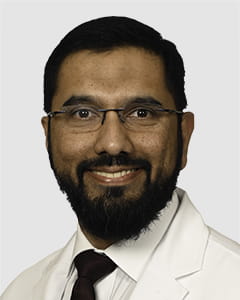Basal cell carcinoma is the most common and least lethal form of skin cancer. But you still need to take it seriously. If left untreated, this cancer can eventually reach muscle, bone and cartilage – with the potential to be disfiguring. In extremely rare cases, it can spread to other parts of the body and become life-threatening.
The importance of early detection was highlighted recently when model Christie Brinkley revealed her treatment for basal cell carcinoma after it was noticed during a routine exam.
What Is Basal Cell Carcinoma?
Every year, more than 4 million people in the U.S. are diagnosed with basal cell carcinoma. Anyone can get this type of skin cancer, though it is slightly more common in men and in people with fair skin and lightly colored eyes. It is also more common if you’re older than 50.
Basal cell carcinoma forms in cells found in the lower part of your outside layer of skin, also known as the epidermis. It’s the layer of skin that you can see and touch. These cells are critical for making new skin, which they do by dividing and making copies of themselves.
Errors in this copying system are what lead to these cancerous lesions. Genetic damage – often caused by excessive exposure to ultraviolet rays (from the sun or tanning beds) – to your basal cells disrupts their ability to do their job properly. When functioning correctly, they make a new cell copy when needed. But when damaged, these cells run amok, creating too many copies of themselves, creating lumps or lesions.
This cancer is commonly found on parts of your body that receive the most sun exposure, including the face, scalp, nose, eyelids, legs, arms and ears.
Symptoms include:
- Lumps, scabs or lesions on your skin
- Lump that may seem almost transparent
- The suspect spot may be shinier than the healthy skin around it
- The lump may slowly grow larger
- It may be itchy or painful
- An ulcer may form, with clear fluid or blood oozing out on contact
Treatments for Basal Cell Carcinoma
There are various treatments for this type of skin cancer, all based on removing or destroying the lesion or tumor. These procedures are usually performed on an outpatient basis in your doctor’s office, using local anesthesia. There is usually minimal scarring afterward.
There are different approaches available, including laser surgery (using an intense beam of light), radiation therapy (with low energy x-ray beams), excisional surgery (with a scalpel) and cryosurgery (which uses extreme cold to destroy the tumor).
Among the more advanced procedures is Mohs surgery, in which the tumor is removed one thin layer at a time. During each step, your surgeon examines the removed tissue under a microscope. Additional layers are removed until all signs of the cancer are gone. The procedure may be recommended when tumors are on or near sensitive areas, including the eyes, lips, nose, fingers and genitals.
Skin Cancer Prevention
The most effective way to avoid basal cell carcinoma is to minimize the amount of ultraviolet light that hits your skin. Of course, that can be difficult living in Florida, but consider these strategies:
Avoid the brightest part of the day: The sun is most intense from about 10:00 am to 3:00 pm. Pick a time outside that window for your outdoor runs, bike rides and gardening.
Say ‘no’ to tanning beds: Studies have shown significant increases in skin cancer risks among users of indoor tanning facilities.
Don’t forget the sunscreen: Even on cloudy days, you should use a broad-spectrum sunscreen (at least SPF 30) on your exposed skin when you are outside. Read the instructions to learn how long your sunscreen is effective – and then reapply as needed.
Wear protective clothes: Keep your skin covered with clothing that is dark and tightly woven. You can also buy clothes with built-in sun protection. Sunglasses and a broad-brimmed hat (not a baseball cap) will also help.
Keep an eye on your skin: Pay attention to any new growths or changes in your moles, birth marks, freckles or bumps. Using a mirror can help you see hard-to-reach areas of your body.





